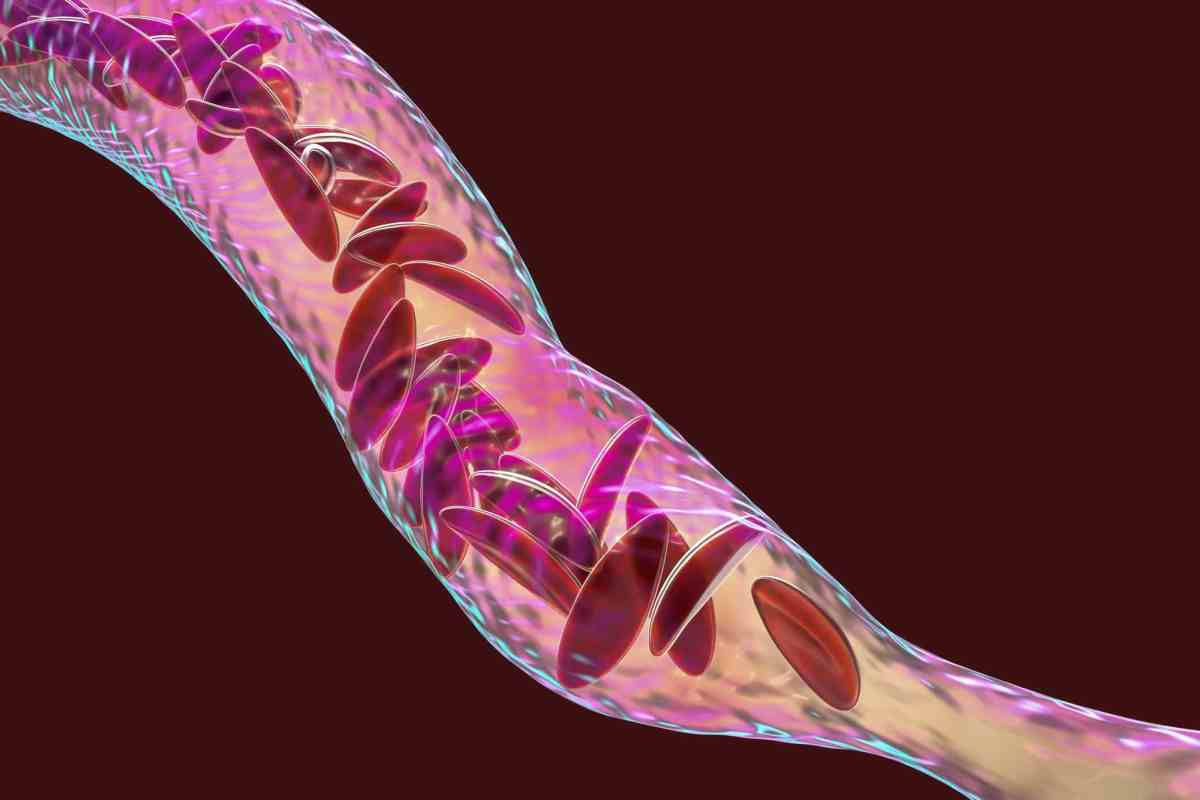Last Updated on November 26, 2025 by Bilal Hasdemir

Colon cancer is a big health issue worldwide. It has many colon cancer types with their own traits and treatments. Knowing these differences is key for good care and treatment.
Adenocarcinoma makes up 85-95% of all colorectal cancer types. But, other types also need attention and the right diagnosis.
At Liv Hospital, we focus on you and offer top-notch care. We help you understand your diagnosis and options with confidence.
Key Takeaways
- Colon cancer includes several unique tumor types.
- It’s important to know the different kinds of colon cancer for effective treatment.
- Adenocarcinoma is the most common, making up 85-95% of cases.
- Liv Hospital offers patient-centered care and expertise in treating various colon cancer types.
- Getting the right diagnosis is key to choosing the best treatment options.
Understanding Colon Cancer Basics
Learning about colon cancer basics is key for catching it early and treating it well. We’ll cover the basics of this complex disease. This includes its definition, risk factors, and warning signs.
What Is Colon Cancer?
Colon cancer, also known as colorectal cancer, happens when abnormal cells in the colon or rectum grow and multiply. This type of cancer is among the most common globally, hitting both men and women, mostly those over 50.
Colon cancer often starts as a benign polyp. This can turn malignant over time. Early detection through screening can greatly improve treatment results.
Risk Factors and Warning Signs
Many factors can up your risk of getting colon cancer. These include a family history of the disease, a personal history of inflammatory bowel disease, and lifestyle choices. A diet low in fiber and high in processed foods, not enough exercise, and obesity are examples.
Signs of colon cancer include changes in bowel habits, blood in the stool, persistent abdominal discomfort, and unexplained weight loss. Spotting these signs early can save lives.
We stress the need to know these risk factors and warning signs. This helps with early detection and prevention.
Types of Colon Cancers: Classification Overview
Colon cancer is classified based on the tumor’s cell origin and molecular features. This helps us understand the different types of colon cancers. It also guides us in creating effective treatment plans.
How Colon Tumors Are Categorized
Colon tumors are sorted by their cell type and genetic makeup. We look at the cells the tumor comes from to identify the cancer type. This is key for choosing the right treatment.
Several factors are used to sort colon tumors:
- Cell origin: The type of cells the tumor starts from.
- Molecular features: The tumor’s genetic and molecular traits.
- Histological characteristics: How the tumor cells look under a microscope.
Importance of Identifying Specific Types
Knowing the exact type of colon cancer is very important:
- Tailored treatment: Different cancers need different treatments.
- Prognosis: The outlook changes based on the cancer type.
- Research and clinical trials: Knowing the cancer type helps find the right trials and therapies.
Research shows that knowing the molecular subtype of colon cancer, like microsatellite instability, affects treatment choices. We aim to provide top-notch care by using the latest research and classification methods.
By grasping the various types of colon cancers and their classifications, we can manage the disease better. This complex process is vital for creating personalized treatment plans.
Adenocarcinoma: The Most Common Type
Colon cancer is most often found as adenocarcinoma, coming from the mucus-secreting glands. This type is common and affects treatment plans and patient results.
Characteristics and Cell Origin
Adenocarcinoma starts in the glandular epithelium of the colon, which makes mucus. It’s known for making mucus, but how much can change. Tumors are also sorted by how they grow and look.
The cells of adenocarcinoma come from the colon’s mucus-secreting glands. Knowing this helps doctors find better treatments.
Why It Represents 85-95% of Cases
Adenocarcinoma makes up 85-95% of colon cancer cases, being the most common. Its high numbers come from genetics, diet, and polyps that can turn cancerous.
- Genetic changes help adenocarcinoma grow.
- Eating a lot of red meat and not enough fiber increases risk.
- Adenomatous polyps are a big risk factor, as they can turn into adenocarcinoma.
Standard Treatment Approaches
Treating adenocarcinoma usually means using surgery, chemotherapy, and radiation therapy together. The treatment plan depends on the cancer’s stage, the patient’s health, and other factors.
- Surgery is key for early adenocarcinoma, aiming to remove the tumor and part of the colon.
- Chemotherapy is used before or after surgery to kill cancer cells.
- Radiation therapy targets cancer cells that can’t be removed by surgery.
Knowing about adenocarcinoma is key for diagnosis and treatment. By understanding its traits and why it’s so common, doctors can improve treatment plans.
Mucinous Adenocarcinoma
Mucinous adenocarcinoma is a rare form of colon cancer. It is known for its high production of mucin. This cancer type is a big part of colon cancer cases and brings its own set of challenges in diagnosis and treatment.
Unique Features and Mucin Production
This cancer is special because it makes a lot of mucin. This mucin can make up more than half of the tumor. This high mucin content can change how the tumor acts and how it responds to treatment.
Key Features:
- High mucin production
- Distinct cellular characteristics
- Potential for varied treatment responses
Prevalence and Risk Factors
Mucinous adenocarcinoma makes up about 10-15% of colon cancers. Studies show it’s more common in younger people and those with a family history of colon cancer. Knowing about its prevalence and risk factors is key for early detection and treatment.
| Characteristics | Mucinous Adenocarcinoma | Other Colon Cancer Types |
|---|---|---|
| Mucin Production | High | Variable |
| Prevalence | 10-15% | 85-90% |
| Age Group | More common in younger patients | More common in older adults |
Treatment Challenges
Treating mucinous adenocarcinoma is hard because of its unique features. The mucin makes surgery harder, and treatment results can vary. Researchers are working on better treatments for this cancer type.
We understand the challenges of treating mucinous adenocarcinoma. We’re dedicated to giving each patient the care they need, tailored to their situation.
Medullary Carcinoma of the Colon
Medullary carcinoma is a rare type of colon cancer. It has unique features that affect its treatment and outlook. These include its distinct look and genetic links.
Distinguishing Pathological Features
Medullary carcinoma has a distinctive histological appearance. It grows in a solid pattern with lots of cytoplasm. It also has a strong inflammatory response.
The tumor cells in medullary carcinoma grow together tightly. This is called a syncytial growth pattern. A big lymphocytic infiltrate is also a key feature.
Genetic Associations
Medullary carcinoma is linked to microsatellite instability (MSI). This is due to DNA mismatch repair problems. It affects the cancer’s outlook and treatment options.
MSI is common in medullary carcinoma. It’s tied to the cancer’s unique features and high mutation rate. Knowing this helps in creating targeted treatments.
| Genetic Feature | Description | Impact on Medullary Carcinoma |
|---|---|---|
| Microsatellite Instability (MSI) | Defective DNA mismatch repair leading to genetic instability | Influences prognosis and treatment response |
| High Mutational Burden | Presence of numerous mutations within the tumor | Potential target for immunotherapy |
Prognosis and Management
The outlook for medullary carcinoma is more favorable than other colon cancers. This is thanks to MSI and a strong lymphocytic response.
Treatment for medullary carcinoma includes surgery, chemotherapy, and sometimes immunotherapy. It’s vital to tailor treatments to each patient’s genetic and pathological profile.
Signet-Ring Cell Carcinoma: The Most Aggressive Form
Signet-ring cell carcinoma is the most aggressive form of colon cancer. It is known for its rapid growth and ability to spread quickly. This type of cancer is often found in the rectum and can be very challenging to treat.
It is important to note that signet-ring cell carcinoma is a rare type of cancer. It accounts for only a small percentage of all colon cancer cases. Despite its rarity, it is known for its aggressive nature and poor prognosis.
Understanding the characteristics of signet-ring cell carcinoma is essential for effective treatment. It requires a multidisciplinary approach, including surgery, chemotherapy, and targeted therapies. Early detection and prompt treatment are critical to improve outcomes and increase survival rates.
It is important to be aware of the symptoms of signet-ring cell carcinoma and seek medical attention if any unusual symptoms are experienced. Early diagnosis and treatment can significantly improve the chances of successful management of this aggressive form of colon cancer.
Key Points:
- Signet-ring cell carcinoma is the most aggressive form of colon cancer.
- It is known for its rapid growth and ability to spread quickly.
- Signet-ring cell carcinoma is often found in the rectum.
- It is a rare type of cancer, accounting for only a small percentage of all colon cancer cases.
- Early detection and prompt treatment are critical to improve outcomes and increase survival rates.
Rare Colon Tumor Types
Most colon cancers are adenocarcinomas, but there are rare types too. These include Gastrointestinal Stromal Tumors (GISTs), lymphoma of the colon, and carcinoid tumors. Each type needs a special approach for diagnosis and treatment.
Gastrointestinal Stromal Tumors (GISTs)
GISTs are rare tumors found in the digestive tract, mostly in the stomach or small intestine. They can also be in the colon. These tumors start from special cells in the digestive system.
Key Features of GISTs:
- Originate from interstitial cells of Cajal
- Often have KIT or PDGFRA mutations
- Can range from benign to malignant
Lymphoma of the Colon
Lymphoma of the colon is a rare cancer in the GI tract. It can cause symptoms like abdominal pain, weight loss, and changes in bowel habits.
Characteristics of Colonic Lymphoma:
- Rare form of non-Hodgkin lymphoma
- Can involve any part of the colon
- Diagnosis often requires biopsy and histological examination
Carcinoid Tumors
Carcinoid tumors grow slowly and start from neuroendocrine cells. They often appear in the cecum of the colon. These tumors can make hormones, causing symptoms in some cases.
Features of Carcinoid Tumors:
| Feature | Description |
|---|---|
| Origin | Neuroendocrine cells |
| Common Location | Cecum |
| Growth Rate | Slow-growing |
| Hormone Production | Can produce hormones leading to carcinoid syndrome |
It’s important to know about these rare colon tumors for proper care. Each type has its own features, diagnosis, and treatment. Accurate diagnosis and testing are key to choosing the right treatment.
Molecular Classification of Colorectal Cancer
Understanding the molecular traits of colorectal cancer is key to finding effective treatments. We now see that colorectal cancer is not just one disease. It’s a group of different molecular subtypes, each with its own traits and treatment options.
Microsatellite Instability (MSI)
One subtype of colorectal cancer is marked by microsatellite instability (MSI). This happens when DNA repair fails, causing many mutations. Tumors with high MSI (MSI-H) often have unique features, like being in the right colon and having a higher grade of differentiation.
Key features of MSI-H colorectal cancers include:
- Higher likelihood of being diploid
- Increased tumor-infiltrating lymphocytes
- Poorly differentiated histology
- Better prognosis compared to microsatellite-stable (MSS) tumors
Other Molecular Subtypes
Other subtypes of colorectal cancer have been found, like tumors with microsatellite stability (MSS) and those with specific mutations like KRAS and BRAF. The BRAF V600E mutation, for example, is linked to a poor prognosis and is common in MSI-H tumors.
Colorectal cancers can also be grouped into four consensus molecular subtypes (CMS):
- CMS1: MSI-Immune, characterized by MSI-H and strong immune activation
- CMS2: Canonical, characterized by WNT and MYC signaling activation
- CMS3: Metabolic, characterized by metabolic deregulation
- CMS4: Mesenchymal, characterized by stromal invasion and angiogenesis
Impact on Treatment Selection
The molecular classification of colorectal cancer greatly affects treatment choices. For instance, MSI-H tumors often respond well to immunotherapy. On the other hand, MSS tumors may not benefit as much from these treatments.
Treatment implications based on molecular subtype:
| Molecular Subtype | Treatment Implications |
|---|---|
| MSI-H | Potential benefit from immunotherapy |
| MSS | Less likely to benefit from immunotherapy; may require other treatments |
| BRAF V600E mutant | Potential benefit from targeted therapies against BRAF |
As we learn more about colorectal cancer’s molecular classification, we’re moving towards more tailored and effective treatments for our patients.
Colon vs. Rectal Cancer: Understanding the Differences
It’s important to know the differences between colon and rectal cancer. They are both types of colorectal cancer but have unique features. These differences affect how we treat them and the results we get.
Anatomical Distinctions
The colon and rectum are parts of the large intestine but are different. The colon absorbs water and salts from food. The rectum stores feces until they are expelled. These roles affect how cancer develops and grows in each area.
Key anatomical differences include:
- The colon is larger and more flexible, with a greater surface area.
- The rectum is narrower and more fixed in its position, surrounded by pelvic structures.
- Blood supply and lymphatic drainage differ between the colon and rectum, affecting cancer spread.
Treatment Variations
Treatment for colon and rectal cancer varies due to their locations and diagnosis stages. Surgery is common for both, but the methods and additional treatments differ.
For colon cancer, surgery removes the tumor and nearby lymph nodes. Chemotherapy may be used based on the cancer’s stage.
For rectal cancer, treatment combines surgery, radiation, and chemotherapy. The rectum’s location near other pelvic structures makes surgery complex. Neoadjuvant therapies are often used to shrink the tumor before surgery.
Why They’re Often Grouped as Colorectal Cancer
Colon and rectal cancers are often called colorectal cancer. They share characteristics and affect the large intestine. This grouping helps in understanding and treating these cancers more effectively.
Reasons for grouping include:
- Similar risk factors and preventive measures.
- Shared diagnostic procedures, such as colonoscopy.
- Overlapping treatment principles, despite variations in specific approaches.
Understanding the differences and similarities between colon and rectal cancer helps tailor treatments. This approach improves outcomes for those with these conditions.
Screening and Early Detection of Different Colon Cancer Types
We strongly support regular colon cancer screening. It greatly increases the chance of finding and treating cancer early. Early detection is key to successful treatment, before symptoms show.
Recommended Screening Methods
There are several ways to detect colon cancer, each with its own benefits. Colonoscopy is the top choice, as it can find and remove polyps. Other options include fecal occult blood tests (FOBT), fecal immunochemical tests (FIT), and CT colonography. The right test depends on the patient’s preferences and risk factors.
- Colonoscopy
- Fecal occult blood tests (FOBT)
- Fecal immunochemical tests (FIT)
- CT colonography
Identifying High-Risk Individuals
Not everyone faces the same risk of colon cancer. Some are at higher risk due to family history, genetic syndromes, or a history of colon cancer or polyps. Identifying these high-risk individuals is key, as they may need more frequent screenings.
| Risk Factor | Description |
|---|---|
| Family History | Having first-degree relatives with colon cancer |
| Genetic Syndromes | Conditions like Lynch syndrome that increase colon cancer risk |
| Personal History | Previous diagnosis of colon cancer or polyps |
Importance of Regular Screening
Regular screening is essential for catching colon cancer early. It helps find the disease early and can prevent it by removing polyps. Following screening guidelines can greatly lower colon cancer rates and deaths.
Knowing about colon cancer types and the need for screening helps us prevent and detect it early. We urge everyone, but high-risk individuals in particular, to talk to their doctor about screening.
Personalized Treatment Based on Colon Tumor Type
Now, we tailor treatments to each colon tumor type. This new approach is changing how we fight colon cancer. It lets doctors create plans that really work for each patient.
Surgery Options
Surgery is key in treating colon cancer. The type of surgery depends on the tumor’s size and location. Minimally invasive techniques like laparoscopy help patients heal faster and feel less pain.
For bigger tumors, open surgery might be needed. This ensures all cancer is removed.
We work with our surgical teams to pick the best surgery for each patient. We consider the tumor’s unique features.
Chemotherapy and Radiation Approaches
Chemotherapy and radiation are used with surgery to fight colon cancer. Adjuvant chemotherapy is given after surgery to kill any cancer left behind. Neoadjuvant chemotherapy or radiation before surgery makes tumors easier to remove.
The choice of treatment depends on the tumor’s type and stage. We customize these treatments to fit each patient’s needs. This way, we get the best results with fewer side effects.
Targeted Therapies and Immunotherapy
New research has brought targeted therapies that focus on the tumor’s molecular makeup. For example, treatments targeting EGFR or BRAF genes are showing promise.
Immunotherapy uses the body’s immune system to fight cancer. Checkpoint inhibitors, a type of immunotherapy, work well on colon cancers with certain genetic markers.
Emerging Treatment Modalities
New treatments for colon cancer are being researched. Precision medicine tailors treatments to the tumor’s genetic profile. Clinical trials are testing new therapies and combinations.
We stay updated on these new treatments. We offer our patients the latest and most effective options for their colon cancer.
Conclusion: Advances in Understanding and Treating Colon Cancer
Research has greatly improved our understanding of colon cancer and its treatments. We’ve looked at the different types, like adenocarcinoma and signet-ring cell carcinoma. Each type has its own challenges and characteristics.
Research keeps pushing forward in treating colon cancer. By studying the disease’s molecular and genetic aspects, we can create better treatments. Targeted therapies and immunotherapy are showing great promise in helping patients.
Knowing the types of colorectal cancer is key to choosing the right treatment. As we learn more, we can offer better care to patients. Our goal is to provide top-notch healthcare by staying ahead in colon cancer research and treatment.
Keeping up with the latest in colon cancer treatment helps patients and doctors work together. This improves outcomes and quality of life. We’re dedicated to supporting patients from around the world who need advanced medical care.
FAQ
What are the different types of colon cancer?
Colon cancer types include adenocarcinoma, mucinous adenocarcinoma, and medullary carcinoma. There’s also signet-ring cell carcinoma and rare types like GISTs, lymphoma, and carcinoid tumors.
What is adenocarcinoma, and how is it treated?
Adenocarcinoma is the most common colon cancer type. It starts in glandular cells. Treatment usually includes surgery, chemotherapy, and sometimes radiation, based on the cancer’s stage.
What is mucinous adenocarcinoma, and how does it differ from other types?
Mucinous adenocarcinoma is a glandular cell cancer type that produces mucin. It’s harder to treat because of its unique features and resistance to some therapies.
What is signet-ring cell carcinoma, and why does it have a poor prognosis?
Signet-ring cell carcinoma is a rare, aggressive colon cancer type. It has a poor prognosis because it spreads quickly and is hard to treat.
How is colon cancer classified at the molecular level?
Colon cancer is classified by molecular characteristics, like microsatellite instability (MSI). This helps guide treatment and find therapy targets.
What is the difference between colon cancer and rectal cancer?
Colon and rectal cancers start in the large intestine but differ in location and treatment. Rectal cancer often gets a mix of surgery, radiation, and chemotherapy. Colon cancer treatment might focus more on surgery and chemotherapy.
Why is screening important for colon cancer?
Screening is key for catching colon cancer early, when it’s easier to treat. Regular screening helps find high-risk people and prevent cancer by removing precancerous polyps.
What are the treatment options for colon cancer?
Colon cancer treatments include surgery, chemotherapy, radiation, targeted therapies, and immunotherapy. The right treatment depends on the cancer type, stage, and patient factors.
What is personalized treatment for colon cancer?
Personalized treatment customizes treatment based on the patient’s cancer type and other factors. This approach aims to improve outcomes and reduce side effects.
Are there any emerging treatment modalities for colon cancer?
Yes, new treatments for colon cancer are being researched. These include targeted therapies, immunotherapies, and other methods. They aim to better treatment results and offer more options for patients.
Reference
NCBI. Research. https://www.ncbi.nlm.nih.gov/books/NBK553197/








